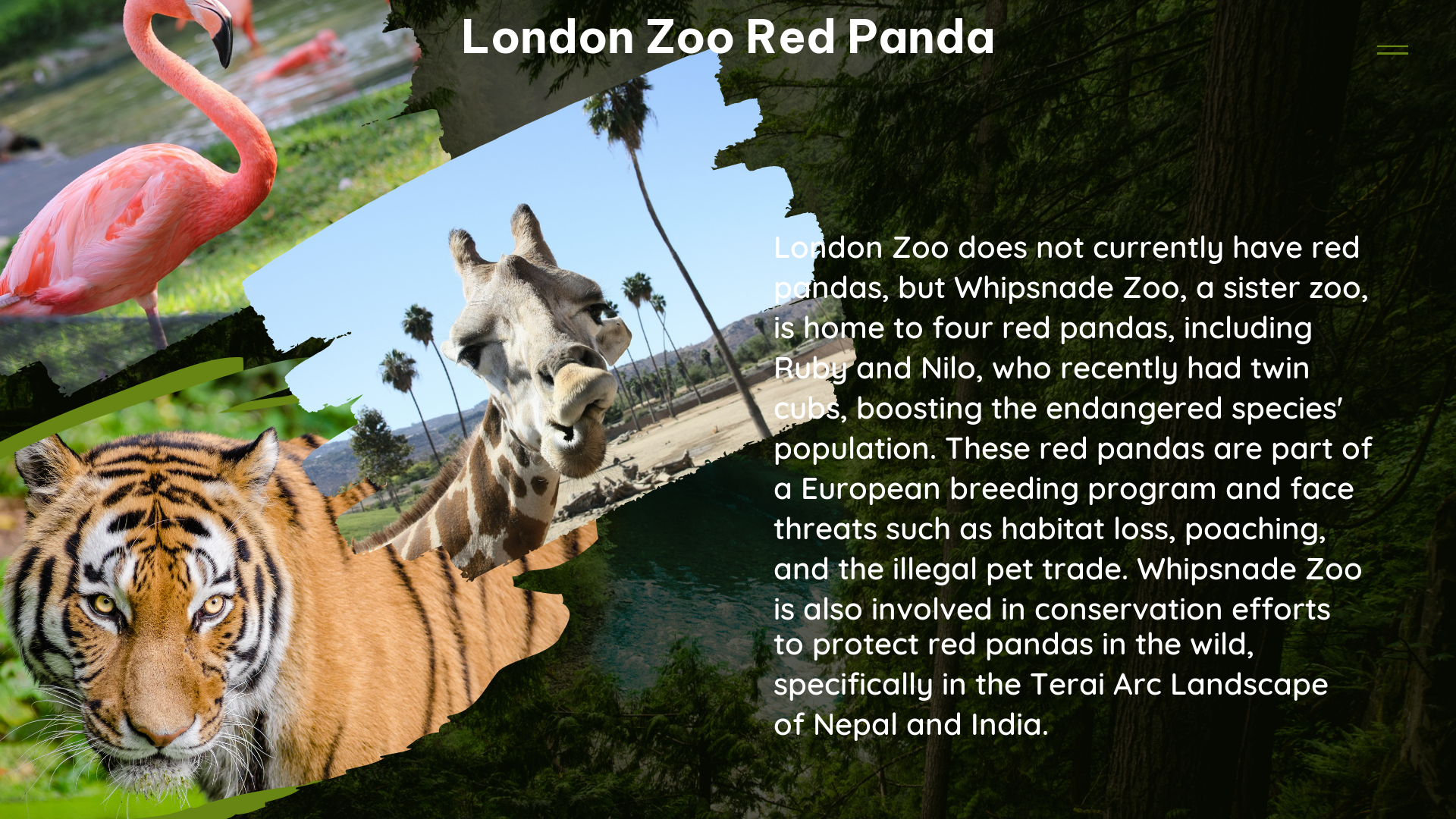Red pandas, with their captivating red fur and raccoon-like faces, are one of the most charming and endearing creatures at the London Zoo. This guide provides an in-depth look at the red pandas at the London Zoo, including their appearance, diet, threats, and the zoo’s conservation efforts.
Appearance of London Zoo Red Panda
Red pandas at the London Zoo have thick, reddish-brown fur that helps them blend in with their mountainous habitat. They have distinctive white markings on their faces, pointed white ears, and a fluffy, striped tail, which they use as a blanket. Their underside is much darker than the rest of their body, almost black in color.
Diet of London Zoo Red Panda

A red panda’s diet mainly consists of bamboo, but they also eat shoots, leaves, and fruit. The London Zoo ensures that their red pandas have access to a variety of bamboo species to meet their dietary needs.
Threats Faced by London Zoo Red Panda
Red pandas are Endangered in the wild, facing threats from habitat loss and fragmentation, habitat degradation, physical threats, and increased poaching for their meat and fur. As human populations move to mountain regions in India, forests are being converted to farming land, which fragments the species and removes their primary food source, Himalayan bamboo.
Conservation Efforts at London Zoo
The London Zoo is home to four red pandas, Nilo, Ruby, and their twin cubs, Alex and Priya. These red pandas are part of a European breeding program for endangered red pandas, which aims to maintain a genetically diverse backup population in conservation zoos while addressing the challenges they face in their natural habitats.
Visiting the London Zoo Red Panda Exhibit
Visitors to the London Zoo can find the red pandas in the Base Camp area, close to the otters. As red pandas are crepuscular, they are most active at dawn and dusk. Therefore, the best times to see them are in the morning when the zoo first opens or just before closing time.
Zoo Information
- Address: Whipsnade Zoo, Dunstable, Bedfordshire LU6 2LF, United Kingdom
- Phone: +44 344 225 1826
- Hours: 10:00 AM – 6:00 PM (last admission at 4:00 PM)
- Ticket Prices: Adult – £32.00, Child (3-15 years) – £23.00, Child (under 3) – Free
- Website: https://www.zsl.org/whipsnade-zoo
Visiting Tips
- Plan your visit: Check the London Zoo’s website for the latest information on the red pandas’ exhibit and any special events or presentations featuring these animals.
- Arrive early or stay late: As red pandas are most active at dawn and dusk, plan your visit accordingly to increase your chances of seeing them in action.
- Respect the animals: Observe the red pandas from a distance and avoid making loud noises or sudden movements that may disturb them.
- Support conservation: Purchase tickets and merchandise from the London Zoo, as proceeds support the zoo’s conservation efforts for red pandas and other endangered species.
References
- Whipsnade zoo ‘ecstatic’ at birth of endangered red panda twins – The Guardian
- ZSL London Zoo Red panda escape – ZooChat
- Red pandas | Whipsnade Zoo
- Red panda cubs have their first vet check-up at Whipsnade Zoo – YouTube
- Endangered red panda family grows with birth of twins at Whipsnade Zoo – Whipsnade Zoo
